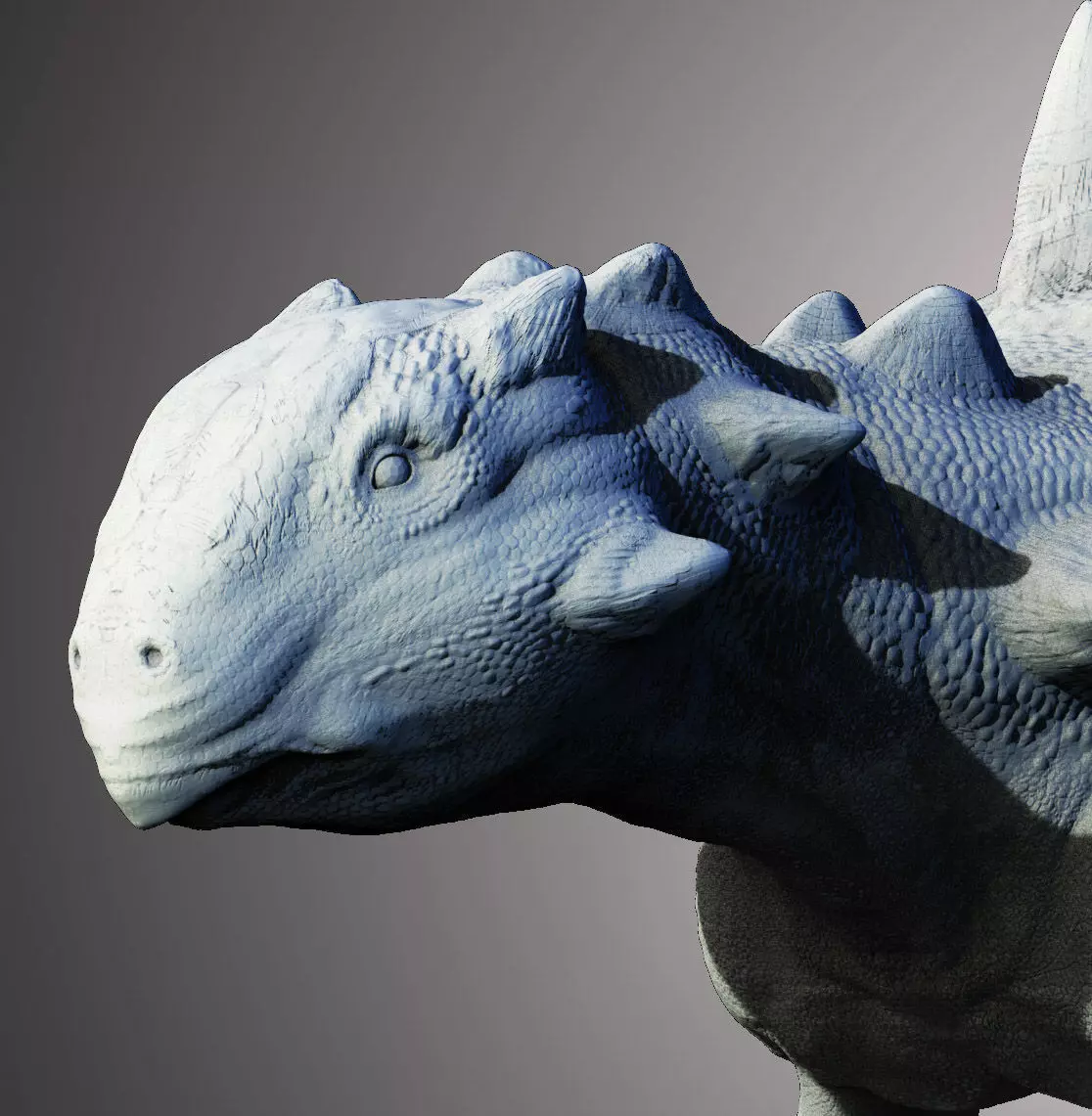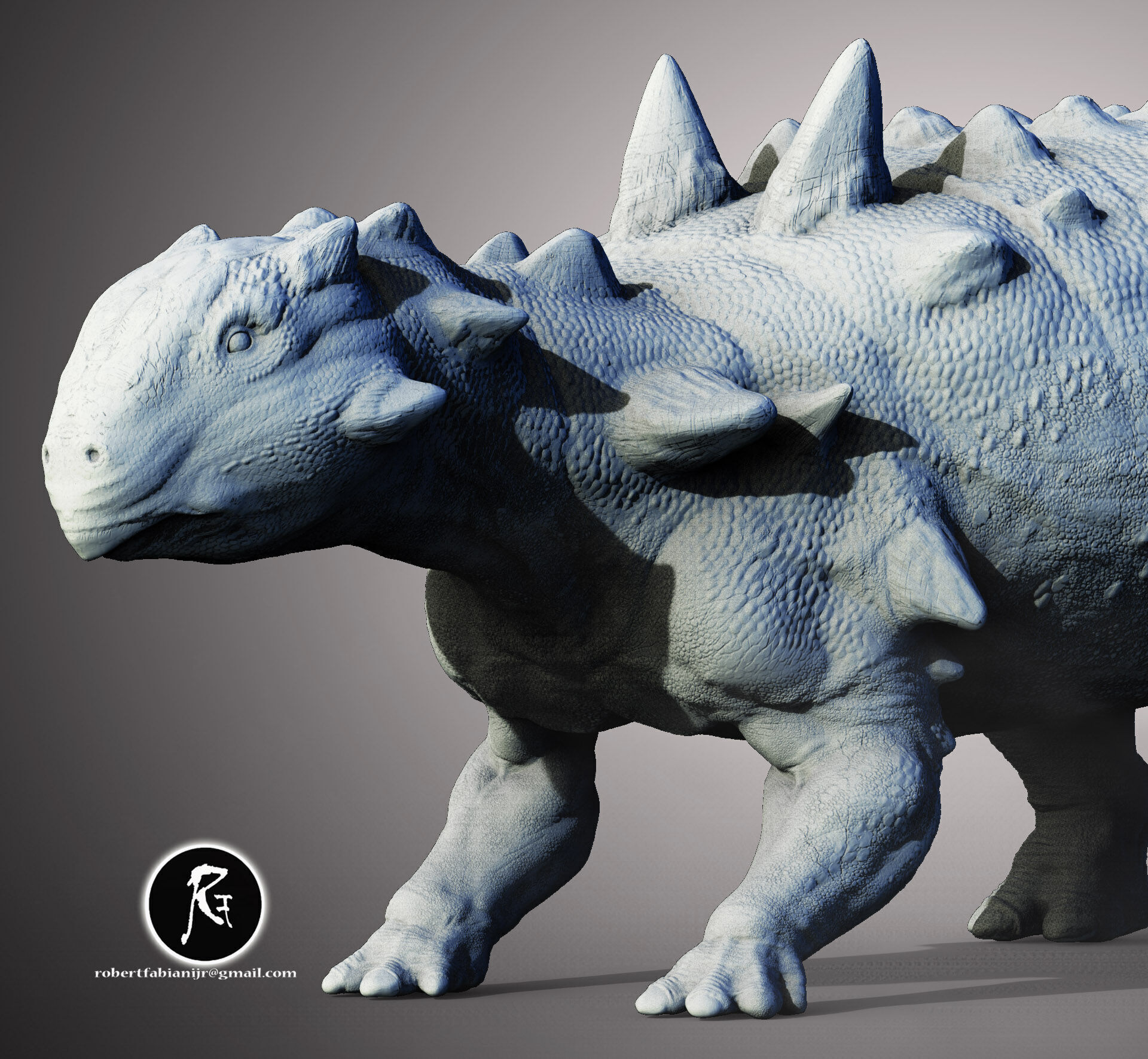
Euoplocephalus tutus Fortified Giant of the Late Cretaceous 3D print model
Euoplocephalus, meaning “well-armored head”, was one of the most iconic and heavily armored dinosaurs to roam the Earth. This formidable herbivore lived approximately 76 to 74 million years ago during the Late Cretaceous period in what is now western North America, particularly in the region of present-day Alberta, Canada and Montana, USA.
Reaching up to 6 meters (20 feet) in length and weighing over 2 tons, Euoplocephalus was built like a prehistoric tank. Its entire body was protected by a mosaic of bony plates called osteoderms, which acted as natural armor against the ferocious predators of its time—particularly tyrannosaurs like Gorgosaurus and Daspletosaurus. Even its eyelids were armored, showcasing just how well-defended this dinosaur was.
But perhaps the most striking feature of Euoplocephalus was its massive tail club—a fusion of large, heavy bones at the end of its tail that it could swing with tremendous force. This biological weapon was not just for show; paleontologists believe it could shatter bone, making it a powerful deterrent against would-be attackers.
Despite its fearsome defense, Euoplocephalus was a peaceful herbivore, feeding on low-growing vegetation such as ferns, cycads, and flowering plants. Its low-slung body and wide muzzle suggest it grazed close to the ground, using its leaf-shaped teeth to grind down plant material.
Fossils of Euoplocephalus are among the best-preserved of any ankylosaurid, offering researchers deep insight into its anatomy, armor, and potential behavior. It lived in the lush floodplains and river systems of what was then Laramidia, a subcontinent split by an inland sea.



